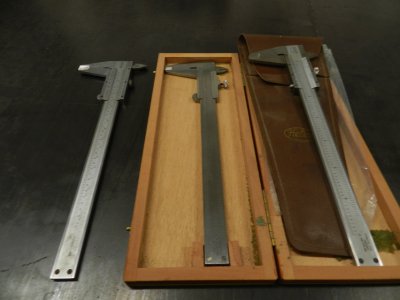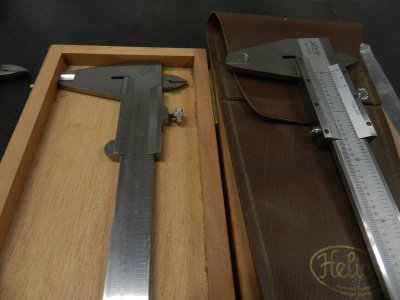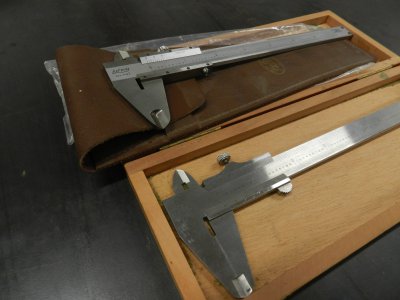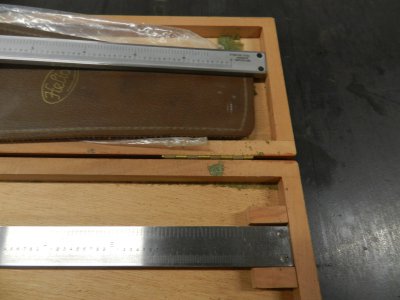- Joined
- Nov 22, 2022
- Messages
- 358
I was going through all of my measuring devices yesterday and dusted off these old relics. Out of the 3, 2 of them are Swiss made, One is a "Swiss Lufkin, The other is made by "Roch" in Switzerland and the 3rd one is made of the finest grade of "Chinesium" and branded "SME"
I measured with all of them and then checked against a "Mitutoyo" Dial caliper and found them to be quite accurate even the Chinese one is quite accurate and the construction of it feels and looks pretty well made.
The Lufkin still had the plastic wrapper around it and is in a nice wooden case but the foam inside of it had turned to dust.
My conclusion is that these are very accurate measuring devices and if you looked closely you could most likely measure to a half thou with these.
I am going to start using one of these just to stay in practice with using them.
I measured with all of them and then checked against a "Mitutoyo" Dial caliper and found them to be quite accurate even the Chinese one is quite accurate and the construction of it feels and looks pretty well made.
The Lufkin still had the plastic wrapper around it and is in a nice wooden case but the foam inside of it had turned to dust.
My conclusion is that these are very accurate measuring devices and if you looked closely you could most likely measure to a half thou with these.
I am going to start using one of these just to stay in practice with using them.





